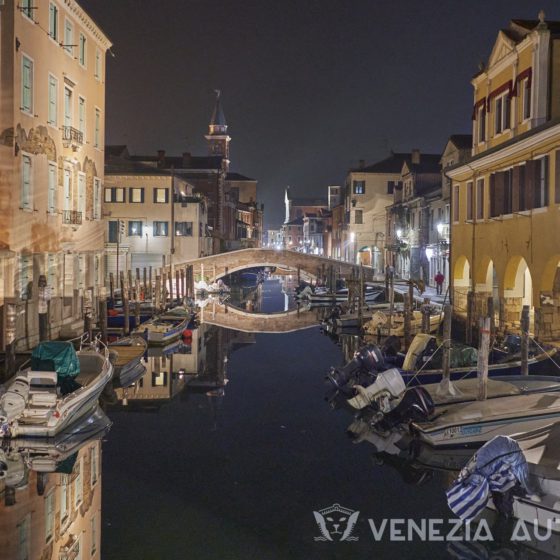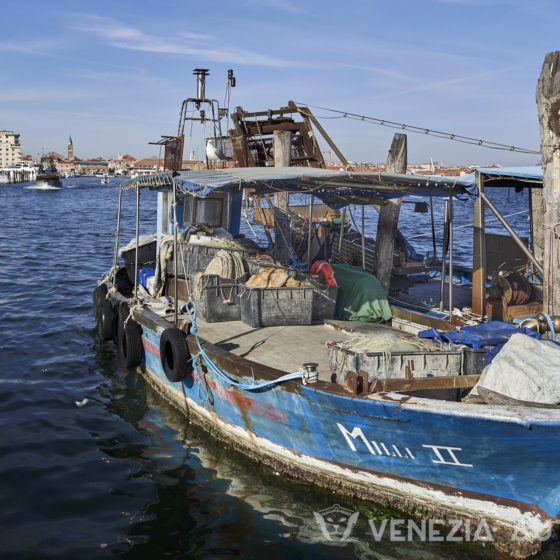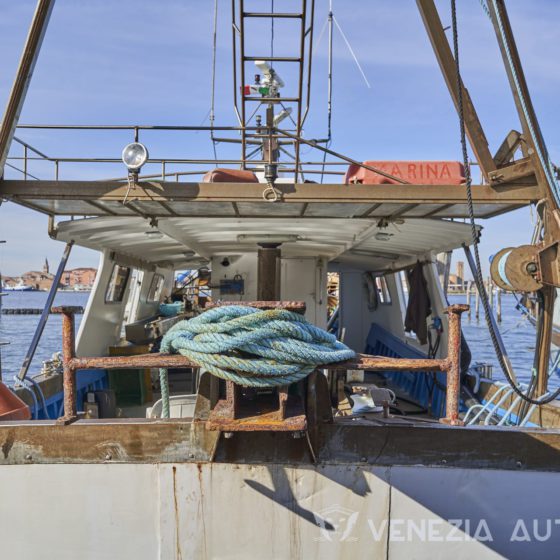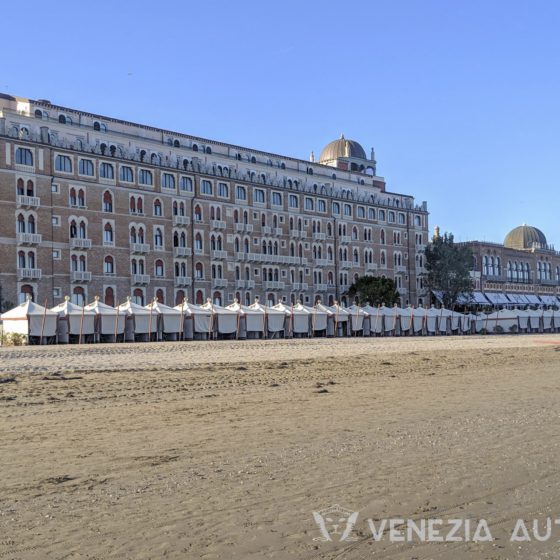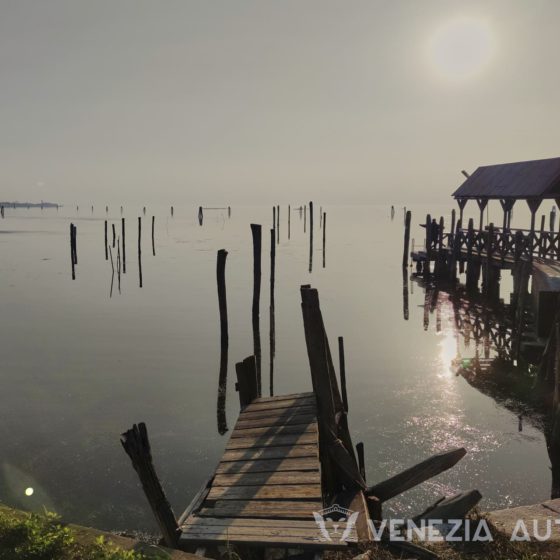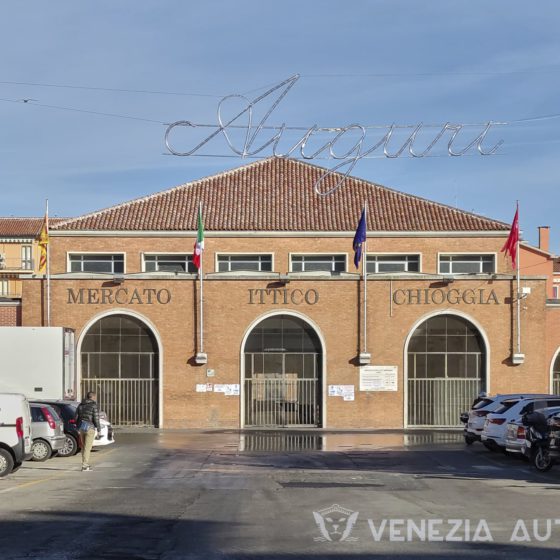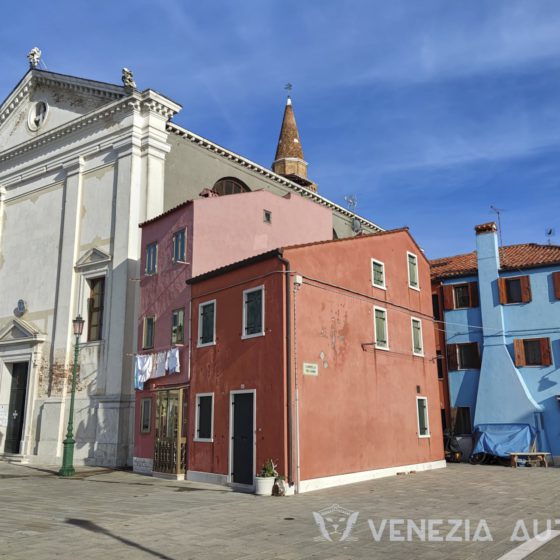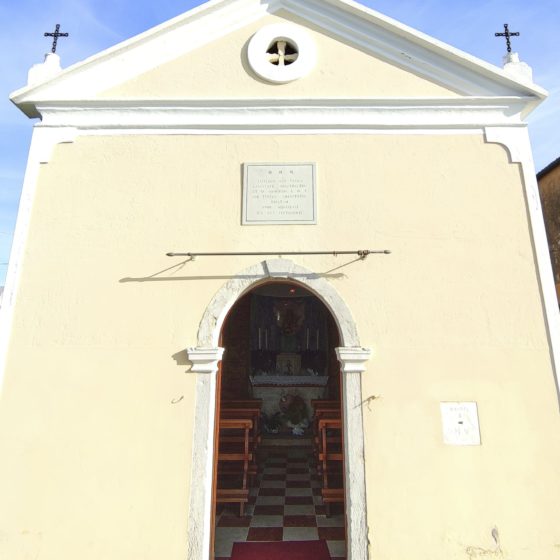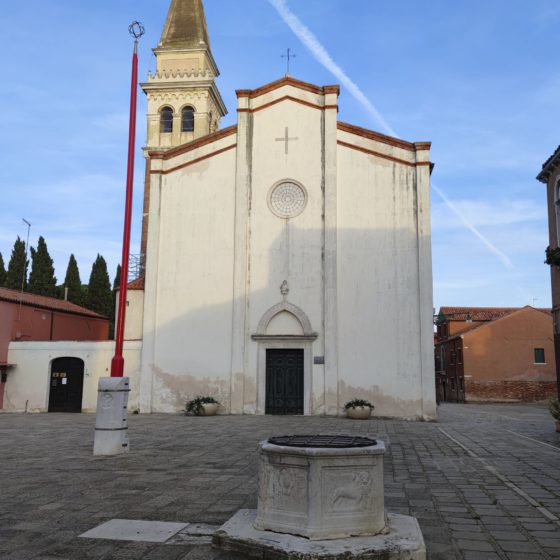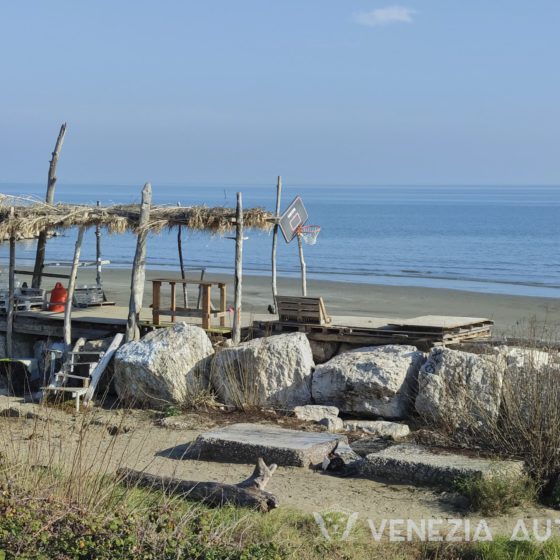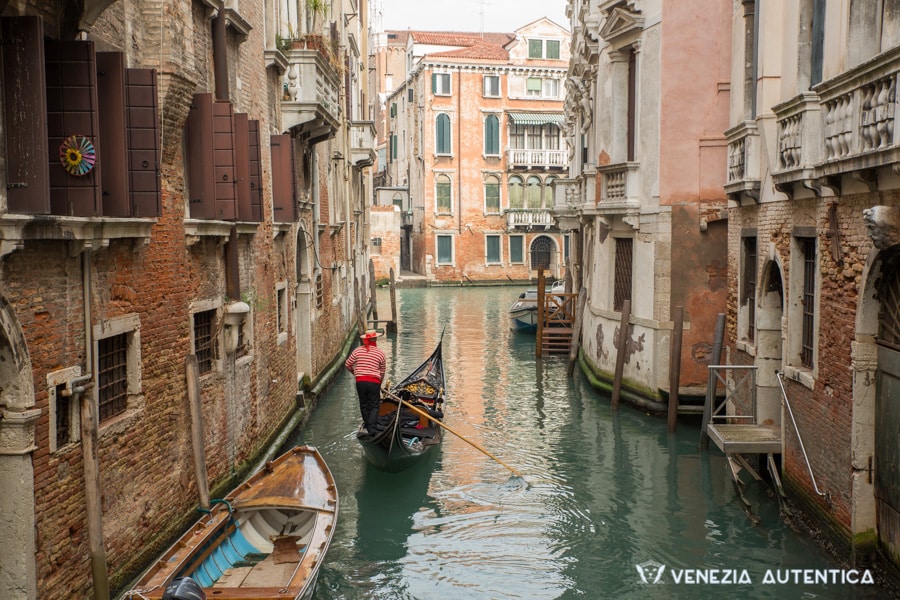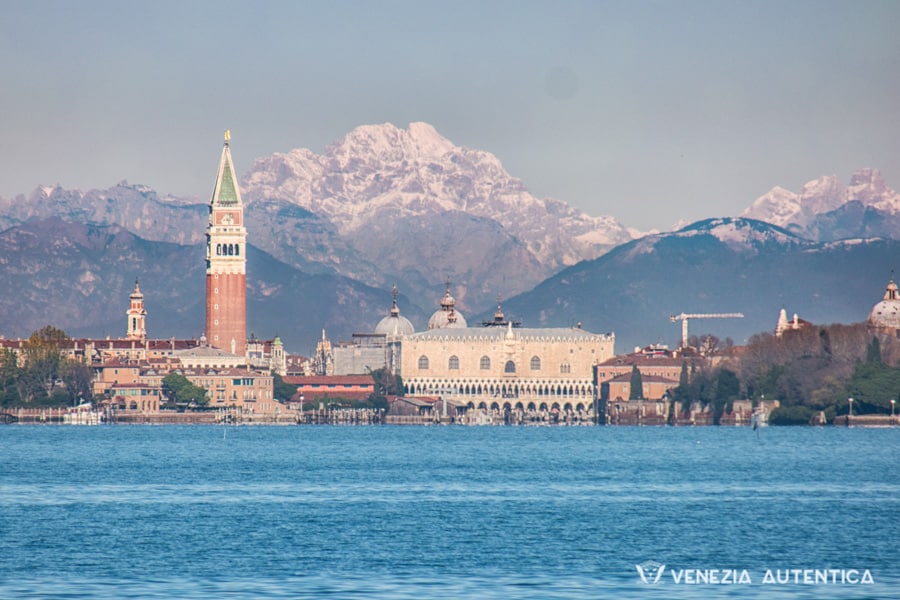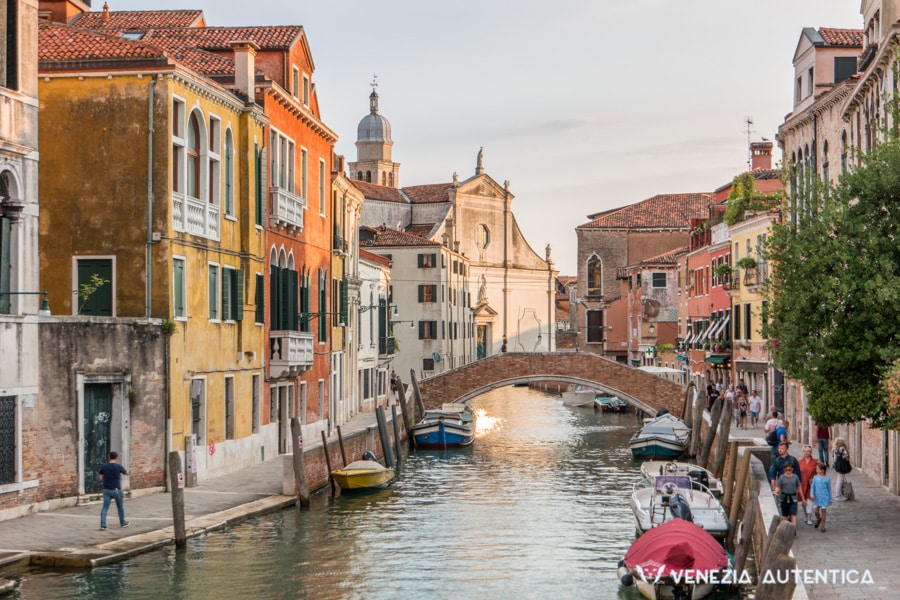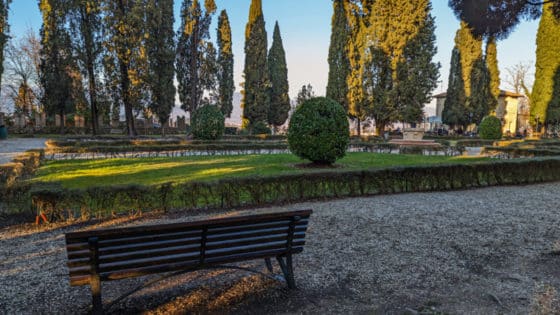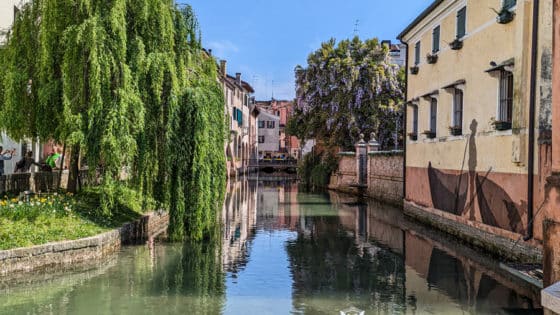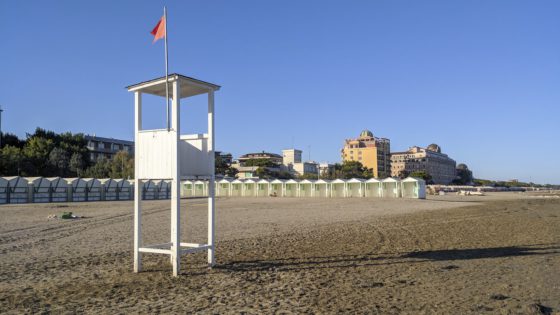Lido, Pellestrina, and Chioggia
Venice, in Italy, is a beautiful city island in the Venetian Lagoon and known and popular destination for international travellers. That, we all knew, right?
But did you know that most tourists visit Venice and only one part of its Lagoon, entirely missing out on three pearls that are so close and easy to reach?
Let’s explain:
Murano and Burano, two city-islands in the northern Lagoon of Venice which are known for their crafts and, the latter, also for the colours of its beautiful houses, are on the bucket list of several travellers visiting Venice.
On the other hand, the southern Lagoon of Venice, however, there are three more inhabited, lively, and “authentic” islands that are often overlooked!
These three pearls are Lido, Pellestrina, and Chioggia
The Lido, the first of its kind...
Of the three “pearls” we just mentioned, the island of the Lido is the closest one to Venice.
The first striking thing about the Lido is its peculiar shape. Indeed, this island is very long and narrow, and it is part of a series of stripes of land that separate the Venetian Lagoon from the Adriatic Sea.
As you might have understood, one side of this island faces the Sea and enjoys the most beautiful sunrises coming straight from the sea, and one side has the most amazing sunset, with the sun setting right behind Venice and the Venetian Lagoon.
The first thing we mentioned about the Lido is its geography, and that is for a good reason.
The proximity to glamorous Venice, its very long beaches, and the possibility to choose to bathe in the Lagoon on one side as well as on the Adriatic Sea on the opposite side gave it all the right ingredients to become first modern beach resort in Europe, in 1857!
The “Lido” immediately became the go-to place for poets, artists, celebrities and royalty. Since then, as you well know, beach resorts started popping up throughout Europe and the rest of the world.
The appeal of the Lido, however, was unrivalled and “lido” became a new word itself in English. Indeed, in British English, “lido” refers to a part of the sea by a beach sectioned off for swimming and other aquatic activities.
Today, the island of the Lido has three “urban” centres across its length: the Lido proper, Malamocco, and Alberoni.
As one might imagine, from all of them it is very easy to access both the Sea and the Lagoon, but these centres also have a few differences from one another.
Firstly, the Lido is the biggest community, with roughly 15.000 inhabitants, while Malamocco and Alberoni have 1.000 inhabitants each.
Secondly, the Lido boasts big luxurious hotels, several bars and restaurants, kilometres of wide beaches and a number of beach resorts renting beach umbrellas and deck chair, as well as entire wooden huts directly on the beach. It has many villas from the early 1900s built in Liberty style, the Italian version of Art Nouveau, as well as hotels and grand hotels, such as the Grand Hotel des Bains, the Hotel Excelsior, and the Hotel Ausonia & Hungaria. The grand hotels, in particular, have been the choice for decades of the world bests writers, businessmen, politicians and royalties.
Malamocco, on the other hand, is a beautiful and very small town re-founded in 1107 after the previous city had to be abandoned due to the erosion by the sea of its shores. The peculiarity of Malamocco’s seaside is the absence of a beach. In its place, you will find the Murazzi, a long barrier of huge white stones built in 1744 to protect the island from the sea. This barrier runs along the shore for several kilometres all the way to from one part of the urban centre of the Lido to the beginning of the Alberoni. The Murazzi are beloved by Venetians, who even built artisanal wood and straw huts for anyone to enjoy… and we surely do!
The Alberoni, finally, has a golf course, a beach resort and a free beach and, most importantly, a WWF protected area. This area, which measures 160 hectares and has 8-10 meters high sand dunes, the tallest in the Adriatic, is the natural habitat of endemic species, birds, and even sea turtles. It can be accessed for free throughout the year, but please do read the signs carefully and behave properly: walking off the designated paths and areas could mean tramping on eggs and creating great damage to our fragile and precious environment.
Getting to the Lido, Malamocco, and Alberoni
Getting to the Lido from Venice is super easy and fast.
1 – From Saint Mark’s Square, reach S.Zaccaria station in less than 1 minute by foot
2- Board line number 1, 2 (available only in the summer), 5.2 or 14, destination Lido S.M.E.
3 – Admire Venice from the water
4- And before you even know it, you reach the Lido. The journey takes less than 15 minutes.
Now that you are the Lido, you can cross the street, leaving the water bus station behind, and walk around the Gran Viale street, discovering the Lido.
If, on the other hand, you’d like to visit Malamocco or Alberoni, it is just as easy!
Once you reach the Lido S.M.E., you will see buses right outside of the exit of your arrival station. Now…
To reach Malamocco: board bus “A”, or “B”. Get off the bus at Malamocco
To reach Alberoni: board bus “A”. Get off the bus at Alberoni
Lines A and B also take you back to Lido S.M.E. once you are done with your exploration
As we mentioned before, the Lido has been the first beach resort. Malamocco, on the other hand, was the second seat of the Venetian Government, before it was moved to Venice.
As you might imagine, there are quite a few things to know about each city. If you’re curious to discover more about the history of the Lido, here it comes
The Lido
The northern part of the Lido island has been used as a base for Venetian fleets since the very foundation of Venice.
Due to its position, in fact, ships could find shelter in the calm waters of the Venetians lagoon, before leaving for the Adriatic Sea and distant shores through the channel San Nicoletto on the north of the Lido, the widest of the three connecting the Sea with the Lagoon.
It is just natural, therefore, that already in 1100 C.E. Venetians dedicated a pre-existing church to Saint Nicolò who was named patron of sailors, traders, and the Venetian fleet.
The importance of Saint Nicolò is such that, right in front of the Church, every year on the Ascension Day, the Government of the Serenissima would make an official ceremony where Venice would symbolically marry the Sea.
Of course, the importance of the Lido remained predominately military and strategic:
- In the area of San Nicoletto, since the earliest years locals built a watchtower on its lagoon-side shore, to keep watch out for enemy ships and pirate.
- Already in 1100 C.E., the watchtower was developed into a fort called Castel Vecchio.
- A shooting range was founded San Nicolò in 1229, and a militia with infantry and artillery was instituted in 1304.
- In 1335 Venetians build the “Turtle”: a platform in the Lido channel, tapered at the stern and bow, and covered by a metal plate which acted as a shield. Big cannons, which were sticking out of this shield, gave it the appearance of the head, tail and legs of a turtle. Finally, an iron chain was placed across this wide channel. Supported by the “Turtle” and two rafts placed midway, this incredibly heavy chain was just above the water, making it impossible for enemy ships to pass.
- In 1543, Venetians built the massive Sant’Andrea Fort, to guard even further the entrance into the Venetian Lagoon and, in 1569 Castel Vecchio was strengthened even further and renamed San Nicolò Fort. In the same years, Venice built several octagonal forts for artillery batteries on islets off the lagoon side shore of Lido, all the way to Pellestrina.
Of course, the Lido worked both as a defence system as well as a base from which to depart of war expeditions, such as for the siege and conquest of Constantinopole in 1203-4, the biggest and wealthiest city in the world, undefeated until then.
As the military strength of the Serenissima decreased towards its end, so did the importance of the Lido. However, it soon became a place where wealthy people and celebrities could relax. To name a few, Goethe, Lord Byron, Wagner, Thomas Mann, and John Ruskin, all took the chance to relax at the Lido.
Soon after, the Lido understood its potential as a resort:
- In 1857, it was offering a shuttle service to and from Venice.
- In 1888, a steamship became the new shuttle service, transporting 200 people at a time from 6 AM to 9 PM during the tourist season. The demand was so high that it had to serve from 4 AM to 11 PM!
- The same year, a new horse-led omnibus offered to take visitors from the Lagoon-side to the beaches on the seaside
- In 1905, the main street was widened to offer a two tracks electric tram service
- In 1920 and 1923 two low-cost bathing resort were built
- The Niceli airport was built at the lido during WWI. By 1939 it was the second most important airport in Italy
- A gold course at Alberoni was opened in 1930.
- In 1932, the world’s first Film Festival was invented by the Biennale di Venezia (the world’s first international art exhibition). Winston Churchill, Henry Ford, Greta Garbo, were just some of the guests and the success was so overwhelming it was decided to hold the Festival every year instead of every other year, as previously planned.
- [even disgusting Hitler and Mussolini chose the Lido to meet, discuss, and enjoy themselves]
The story of the small town of Malamocco is quite different. Located in the central-southern part of the island, it was the only significant settlement from 1107 C.E. to the 19th century. Before then, its former settlement was known as Metamaucum and had been the second capital of the Venice from 742 to 811 C.E., before it was moved to Rivoalto, in Venice, and for a good reason
Metamaucum, in fact, was occupied in 810 by Pepin, when he tried to invade the lagoon in 810, unsuccessfully. Locals realized that the area was not safe enough and decided to move the seat of power to Rivoalto, in the middle of the Lagoon. Immediately, its influence decreased and never gained back its old prestige.
According to the tradition, Metamaucum was on the seashore of the Lido island but was submerged by a storm surge. However, it is thought that it simply had to be abandoned and its inhabitants relocated due to constant erosion of its shores by the water.
FUN FACT: You all very well know Saint Nicolò, whose remains are in Venice (and Bari, Italy). This beloved Saint, who is the patron of the French region of Lorraine as well as all of Russia, is also Patron of Amsterdam, where he is known as Sinterklaas.
You might remember that it was the Dutch who founded New Amsterdam in the Americas, which we all know today respectively as New York and the United States. Clearly, the Dutch exported to New York also the cult of Sinterklaas but his name changed, too… Have you figured it out yet? Yes, Sinterklass became Santa Claus!
So, well, we could say that the remains of Santa Claus are at the Lido, in Venice.
EXTRA:
1 – The lido has a Jewish Cemetery since 1389, and a memorial of the fallen soldiers of the First World War!
2 – Famous cartoon artist Hugo Pratt, who created “Corto Maltese”, chose to lived in Malamocco in the 70s!
Pellestrina, a stripe of land between the Sea and the Lagoon
While the Lido is minutes away from Venice and Chioggia is connected directly to the mainland via bridges, Pellestrina, our second “pearl” is the island farthest from other city centres.
Just like the Lido, also Palestrina is very long and narrow and part of those stripes of land that separate the Venetian Lagoon from the Adriatic Sea.
Clearly, just like the lido, one side of the island faces the Sea and one side the Venetian Lagoon. Since Pellestrina is farther away, however, during the winter times it is not unlikely to admire the water without any wave caused by motorboats. This gives you the chance to admire a perfectly still Lagoon, just the way it has been for thousands of years. And, frankly, seeing it in a damp day and being unable to tell where the water and the sky meet is simply mesmerizing.
Just like the Lido, the narrow but long shape of the island of Pellestrina resulted in 4 different small towns: San Pietro in Volta, Porto Secco, Sant’ Antonio di Pellestrina and Pellestrina. And if you think it’s okay to confuse Porto Secco and Pellestrina, you are mistaken! San Pietro is San Pietro, Porto Secco is Porto Secco, and Pellestrina is Pellestrina.
What we can all safely say is common to all of them, however, is the fact that their houses are colourful, beautiful and a pleasure for our eyes.
Pellestrina benefits from tourism but, unlike the Lido, its main industry is fishing. Once in Pellestrina, you will see dozens of fishing boats lined up on the Lagoon side, and other coming from or going to their fishing expedition. If you’d like to try fresh fish from the Lagoon or from the Sea, Pellestrina is always a great choice.
One other source of income for locals is the Merletto di Pellestrina, Pellestrina Lace. Unfortunately, it is not as popular and acclaimed as the Burano Lace which is deemed to be more complex and requesting more time than Pellestrina’s, which uses bobbins and several threads. The origins of the Pellestrina Lace, however, date as far back as to the XVI Century, its tradition and techniques have been handed down from mothers to daughters, and the works still made today by elder ladies in Pellestrina are simply stunning.
One more and last similarity between the Lido and Pellestrina is that Pellestrina, too, has a natural reserve at its very South: Ca’ Roman.
Ca’Roman is a Site of Community Importance (SIC) and a Special Protection Area (SPA), which preserves one of the most intact dune environments in the whole upper Adriatic. It is located on one of the most important migratory routes in Italy and, despite its small size, a total of 190 species of birds use it in autumn and spring to rest and feed before resuming the journey.
The superstars and main reason for establishing Ca’ Roman Nature Reserve since 2012 are two species of endangered birds, the Kentish Plover and the Little Tern.
Getting to Pellestrina
Getting to the Lido from Venice is super easy and fast. And getting from Lido to Pellestrina is just as easy!
Venice to Lido:
1 – From Saint Mark’s Square, reach S.Zaccaria station in less than 1 minute by foot
2- Board line number 1, 2 (available only in the summer), 5.2 or 14, destination Lido S.M.E.
3 – Admire Venice from the water
4- And before you even know it, you reach the Lido. The journey takes less than 15 minutes.
Once you reach the Lido S.M.E., you will see buses right outside of the exit of your arrival station. Now…
5- Get on the bus “11” and enjoy the ride until the end of the Lido.
6- Enjoy the adventure as your bus boards the ferry at Alberoni
7-Just a few minutes and your ferry will dock again, this time on the north of the island of Pellestrina
8- Stay on the bus until you reach Pellestrina Sant’Antonio Stop (12 stops)
It may sound like a looooong journey, but it’s not. Once you are at the lido, it takes just 37 minutes to be at Sant’Antonio stop!
Line 11 in the opposite direction takes you back to Lido S.M.E.
Just like the Lido, the history of Pellestrina is also tied to that of Venice
If you’d like to know more about it, you can find some informations below
History of Pellestrina
In ancient times, the islands in the Venetian Lagoon were only serving as a temporary refuge to fisherman and hunter who were using the Lagoon as their fishing and hunting ground.
Around the VI Century, however, constant barbarian invasions on the mainland forced populations in Padova, a city much older than Rome itself, to look for safer places.
Since the 800, the main center was formerly Albiola, located in what today is the top third of the island. Today, because, at that time, the coast was divided in two! Albiola’s port, in fact, was located at the mouth of an ancient branch of the Brenta river and, on the opposite side, was the port of Pellestrina.
Over time, however, this harbour was buried due to natural causes and was replaces, instead, by the town of Portosecco (literally, Dry Port), uniting the two islands.
The towns of Pellestrina grew over time but were completely destroyed in late 1300 during the War of Chioggia, a violent war fought between Venice and Genova to impose themselves as the major force in maritime trades.
Already on the 1st of July 1380, the Venetian Doge (Duke) Andrea Contarini commissioned the reconstruction of Pellestrina and gave the city’s districts very peculiar names, that still last today: Scarpa, Vianello, Zennaro, and Busetto, which were and are the most common surnames of the islands’ inhabitants!
Chioggia, a little Venice with a big beach
Although it is the farthest of the three “pearls”, Chioggia is most likely the one that resembles Venice the most… but with a few twists!
Chioggia is a beautiful city-island located in the very south of the Venetian Lagoon, a linear distance of 24 km from Venice.
It’s not a thin stripe of land between the Lagoon and the Sea, like the Lido and Pellestrina. On the contrary, like Venice, it is entirely placed within the Venetian Lagoon.
Although Chioggia is the farthest from Venice, it is not the most isolated. On the contrary, Chioggia is the closest to the mainland to which it is connected via several bridges.
So, what are the “twists” we are talking about when we compare Chioggia to Venice?
As you might have understood, just like the Lido and Pellestrina, Chioggia also has cars that can drive up and down its streets, as well as bicycles and scooters. This is particularly striking as Chioggia looks a lot like Venice when you’re standing on a bridge, overlooking a canal and the houses all around it.
Secondly, Chioggia is basically at the very entrance of one of the three channels of the Venetian Lagoon leading to the open sea. Unsurprisingly, many boats you will see in Chioggia and in nearby Sottomarina are fishing boats, much bigger than typical Venetian boats you will see in Venice.
Finally, it is possible to go from Chioggia to its nearest beach in Sottomarina, by foot, in just 15-20 minutes! Indeed, Chioggia is connected via bridges to the bigger island of Sottomarina which has a 5Km beach on the Adriatic sea
We mentioned that Chioggia is similar to Venice and, indeed, it has its canals and bridges. However, Chioggia has far fewer canals and bridges and, therefore, unlike in Venice boats are not the primary mean of transportation.
This is not to say that boats are not a crucial part of life in Chioggia and Sottomarina, quite the contrary. As we mentioned before, when walking around Chioggia and Sottomarina you will see an incredible number of fishing boats since fishing is a great business in Chioggia. And when we say great, we really mean great: Chioggia’s is the second biggest fish market in Italy!
While the main industry in Chioggia is fishing, the second most important industry is tourism, which leverages the beauty of Chioggia and the long beach of Sottomarina.
Ironically, already hundreds of years ago Venetians and the Venetian writer Carlo Goldoni used to describe “Chioggiotti” (the inhabitants of Chioggia) as a bit wild and ready to scuffle but also full of joy for life and up to dance and celebrate. And these two “vocations” of Chioggiotti, being a bit hardcore but also joyful and happy to celebrate, would seem to be the perfect ingredients to develop on the one hand the fishing industry, which requires people to withstand rough situations, and on the other hand, tourism, which is done best by people who are joyful around others.
Already at the times of the Serenissima, Chioggia
Getting to Chioggia
As you have seen, getting to Pellstrina from Venice is super easy and relatively fast. Now, getting to Chioggia is just as easy.
Venice to Chioggia, over the Lagoon:
A – Go from Saint Mark’s S.Zaccaria station to Lido, boarding boat number 1, 2 (available only in the summer), 5.2 or 14
B – Once you reach the Lido, get on the bus “11”. Sit while your bus boards a ferry at the end of the Lido, and wait until it reaches its last stop at the end of Pellestrina.
C – Get off the bus, and board boat number “11”, right in front of you, that will bring you from Pellestrina Cimitero to Chioggia.
Done!
Do the same in the opposite direction to go back to Venice 😉
Venezia to Chioggia over land:
A – Board an “Arriva Veneto” bus which leaves from Venice (Piazzale Roma) and ends its journey in Chioggia, 1h and 15 minutes later.
History of Chioggia
You might not believe it, but the legend about the origins of Chioggia is tightly connected to that of Rome.
In Virgil’s famous work, in fact, mythical Aeneas fled the destruction of Troy, settled down in Italy and, many years later, his descendants founded Rome. What you may not know is that also Aquilio, Antenore, and Clodio also left with Aeneas but, halfway through the journey they separated from him. The three of them headed towards the Venetian lagoon, founding respectively Padua, Aquileia and Clodia, which later became Chioggia.
Sound like a legend, right? It sure is but, thanks to recent studies and archaeological finds, what else is sure is the time around which Chioggia was born: 2000 B.C.E.!
At the time of the Serenissima, the Venetian Republic, Chioggia was important above all for its production of salt, the “Sal Clugiae”, considered one of the most valuable. The great value of salt in ancient times made its production in Chioggia the most important activity for the economy of the city. For that reason, salt production was the activity of a large part of the population and the available forces. A total of 72 water enclosures used for producing salt were able to produce over 200 times the need of the entire population, giving Chioggia the chance to trade 99,5% of its production and make enormous profits.
Such a profitable industry attracted competitors’ attention, ultimately leading to the War of Chioggia (1378-1381), fought between Venice and Genoa. In 1379 Chioggia and Pellestrina were devastated by the battles, and the former even fell into the hands of Genoa. Venetians, however, managed to reconquer it the following year, in 1380. That represents the last clash between Venice and Genoa and, since then the power of the Republic of Genoa declined.
EXTRA:
Chioggia’s Sant’Andrea’s tower has one of the oldest functioning clocks in the world! Until recently, Salisbury was thought to be the oldest clock in the world, but recent findings state that Chioggia’s even older…
In 1438, the Camuffo shipyard, the oldest still-active shipyard in the world, was founded in Creata. Only a few years later it was moved to Chioggia and it was run by the same family until 1840! It then was moved to Portogruaro and it’s still operating today, almost 600 years after it’s foundation!
Make sure to check out our gallery of photos and video of Lido, Pellestrina, and Chioggia!
I'm visiting Venice. Why should I follow your recommendations?
The way you visit Venice has an impact both on the quality of your experience and on Venice itself. Chilling, exploring, shopping, eating and drinking where the locals do, can make a huge impact both on the memories you bring home and on the local economy and community.
POPULAR POSTS LIKE THIS
Liked this article? Don’t forget to share the love!
Home >> Visiting Venice >> Tips and Inspiration >> You’re Here
Tips and Inspiration to experience Venice
More in Visiting Venice


